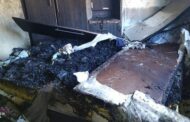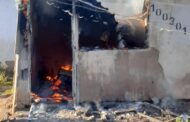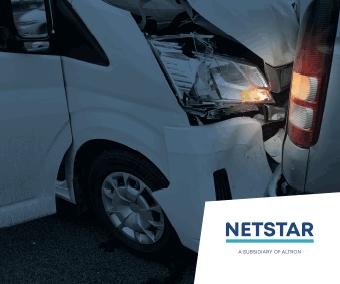What should I do if someone faints? How do I help someone who appears to be choking?
Online multimedia resource:
What should I do if someone faints?
Try to prevent him or her from getting hurt when falling. Put the patient in the recovery position on a bed or the floor. He or she should wake up within a few seconds. If it doesn’t look like a normal fainting spell or the person appears seriously ill, call an ambulance immediately. The number for ER24 is 084 124.
I’ve burnt my hand on the stove – should I go to the hospital?
First aid is the most important first step. Keep your hand under clean, cool running water for 15 to 20 minutes even if there is no blistering. This will prevent further damage to the deep skin sections that cause scarring and other complications. If there are many blisters or you are experiencing unbearable pain, you should consider going to the hospital for further assessment. Don’t use ice or frozen peas directly onto a burn because the freezing is harmful to the skin.
How do I help someone who appears to be choking?
If the person is coughing or is able to speak, let him or her settle down without interfering. Take him or her to the nearest doctor or hospital if the problem persists. If he or she can’t speak because of an obstructed airway or shows signs that they are choking (both hands around the neck), then you can attempt the Heimlich manoeuvre on an adult or backslaps and chest thrusts on a small child. This procedure is taught in basic life support and first-aid courses and it’s advisable to do this training if you want to be able to help someone who may choke one day.
How deep should a cut be before I seek treatment?
Even minor cuts can become infected. Clean them with a lot of tap water and ensure that your tetanus vaccinations are up to date (every five to 10 years). If the wound is gaping, even a little bit, or won’t stop bleeding after 3 minutes of direct pressure, then you should seek medical advice. Take special care with wounds on the face (these have cosmetic implications) and hands – in case of nerve, tendon or vessel damage.
If I suspect a child has ingested a poisonous substance, how should I react?
Stay calm. Call a poison advice service such as the Red Cross Children’s Hospital on 021 689 5227 immediately. Don’t induce vomiting or give the patient anything to drink before consulting with a health care provider. You can take your child to the nearest emergency centre for an examination and further treatment if he or she looks ill or if you’ve been instructed to do so by the poison advice line. Take the container along to help identify the suspected poisonous substance. If the child is unconscious, or behaving unusual, and breathing is irregular, rather call an ambulance to stabilize before transport.
How do you know if you’ve broken a bone? Is an electrical shock always hazardous? These answers and more in Part 2 of Identifying Emergencies.
What are the symptoms of a dangerous bee sting?
Bee stings are not dangerous unless you are allergic to the bee venom. It is the same as being allergic to nuts or penicillin. If you experience breathing difficulty, swelling of your face or throat, fainting or dizziness, or a red rash immediately after a sting you may be allergic to bees and should seek immediate medical help. The immediate lifesaving treatment of anaphylaxis is adrenaline. Some people get severe swelling at the site of the sting. This is not life threatening but could cause pressure complications and infection, so you should consult a health care practitioner for treatment options. If somebody is stung multiple times in one event by bees they should be transported to hospital for observation, even if they don’t show any signs of allergy.
If I fall off a ladder, what precautions should I take in case I have a broken bone? How do I know if I have a broken bone?
If you think you have injured your neck or back and cannot move your arms/ legs, you should avoid moving and ask someone else to call an ambulance so that a paramedic can assess you. Rather let your emergency response team transport you to an emergency centre for x-rays and clinical review.
The symptoms of a broken bone are pain, swelling and difficulty moving the affected part. Splinting the injured limb reduces the pain and prevents further damage. Rib and pelvis fractures can be serious and should be assessed at an emergency centre. If you suspect a fracture you should have an x-ray. It is not always possible to tell the difference between a sprain and a fracture without an x-ray. In addition, some fractures need operations to prevent permanent disability. Falling from a ladder is a preventable accident and the consequences can be very serious. You should exercise extreme caution and preferably have someone at the bottom to help steady the ladder at all times.
Is an electrical shock always hazardous?
Common household electricity has a relatively low voltage and causes pain or a spark when you touch it briefly. This does not require medical treatment. Prolonged contact with an electrical point will cause general body seizure movement and can cause severe burns, muscle damage, fractures and heart rhythm disturbance. If you are electrocuted in this way you must seek medical attention even if you feel well afterwards. The muscle damage could lead to kidney failure. Contact with power lines and cables at electrical substations can be fatal.
When is bleeding and/or bruising considered a problem?
Bruises in the mouth that appear for no reason could indicate a bleeding disorder. Bleeding into joints after minor bumps or no trauma is abnormal. Nosebleeds are very common and usually stop with first aid measures. If the nose bleeding cannot be stopped then it may indicate a clotting problem. If you cough up blood, vomit blood or pass blood in the urine or stool it is abnormal. Cut wounds can bleed a lot but should be controlled with direct pressure. Frequent bleeding episodes (such as blood in stools or excessive menstrual bleeding) can lead to anaemia and must be attended to by a doctor.
How do I know if chest pain is just chest pain, or if it’s something serious?
Chest pain should always be taken seriously. There are three factors to consider: the nature of the pain, associated symptoms and risk factors. Typical cardiac chest pain is a crushing feeling/feels as if an elephant is sitting on your chest. It may also resemble a belt or band tightening, or a very unpleasant discomfort that is hard to pinpoint.
However, some people have silent heart attacks (myocardial infarction), with no pain. Associated symptoms are very important. Extreme tiredness or breathlessness, vomiting, sweating, fear and pain that moves to the arms or jaw are serious warning signs, as is fainting or feeling like fainting while having chest pain.
Common risk factors for heart disease are smoking, diabetes, family history of heart attacks, obesity, age over 40, cocaine use and high cholesterol.
Myocardial infarction is not the only serious cause of chest pain. If the chest pain worries you, especially if there are associated alarm symptoms, you should call a doctor or go to the emergency centre for further assessment.
Heart disease prevention is the most important action to take if you are at risk of heart disease. Regular exercise, following a healthy diet and lifestyle and regular check-ups to detect conditions such as diabetes, hypertension and high cholesterol are essential. Exercise ECG tests can detect coronary artery disease (narrow heart arteries) before you get a heart attack. If you have significantly narrow coronary arteries, a stent or two could prevent permanent heart damage.


























